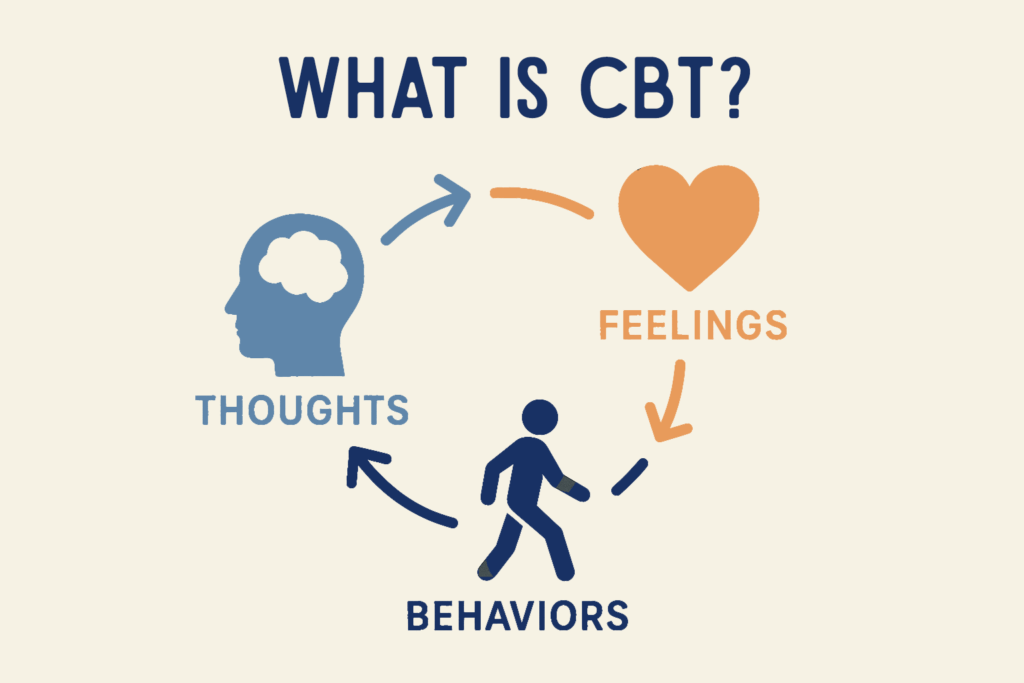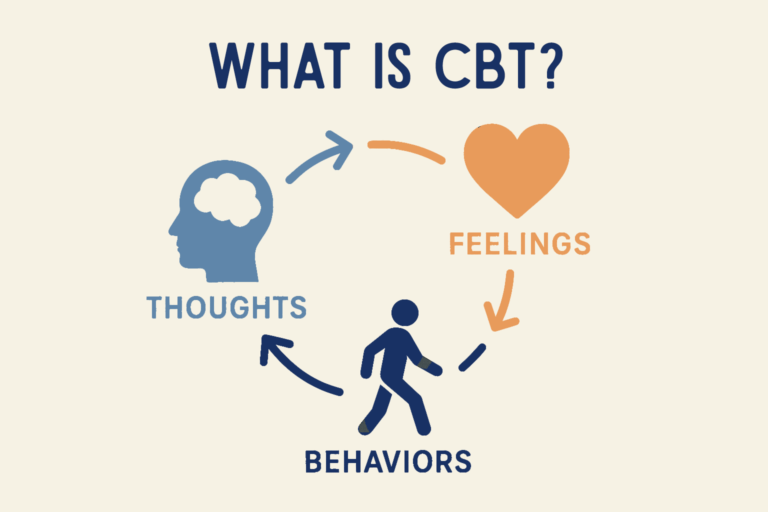
What is CBT?
Transform Minds. Modify Actions. Advance Mental Health.
Cognitive and Behavioural Therapies (CBT) are a group of evidence-based therapies that guide people to observe how their thoughts, emotions and behaviors influence each other and can spiral to create suffering — and how by shifting each, they can transform the other and improve mental health.
Using strategies that regulate emotional arousal and build helpful thoughts and behaviors, CBT empowers individuals to reduce suffering, achieve valued goals and create lasting well-being.
Proven effective across a wide range of conditions—from anxiety and depression to trauma, OCD, and chronic illnesses—CBT is used in communities, clinics, and health systems around the world to reduce suffering, improve mental health and quality of life.
CBT Therapies
The types of cognitive and behavioral therapies (CBT) include but are not limited to:
- Acceptance and Commitment Therapy (ACT)
- Behavior Therapy (BT)
- Behavior Modification (DM)
- Combined Cognitive and Behavior therapy
- CBT for Couples and Families
- Cognitive Therapy (CT)
- Dialectical Behavior Therapy (DBT)
- Exposure and Response Prevention (ERP
- Prolonged Exposure (PE)
- Cognitive Processing Therapy (CPT)
- Mindfulness-Based Cognitive Therapy (MBCT)
- Parent-Child Interaction Therapy (PCIT)
- Parent-Child Interaction Therapy for SM (PCIT—SM)
- Habit Reversal Therapy (HRT)
The Purpose of CBT
The purpose of CBT is to reduce emotional distress, solve problems, reach valued life goals, and live life optimally.
CBT is used to prevent and treat symptoms, problems and illnesses that include but are not limited to:
- ADHD
- Anorexia Nervosa
- Agoraphobia
- ARFID
- Bedwetting
- Binge Eating Disorder
- Bipolar Disorder
- Body Dysmorphic Disorder
- Bulimia Nervosa
- Conduct Disorder
- Conflict (e.g., marital)
- Depression
- Dysthymia
- Generalized Anxiety Disorder
- Grief
- Habit Disorders (e.g., nail biting)
- Headaches
- Insomnia
- Motivation
- Obsessive Compulsive Disorder
- Oppositional Defiant Disorder
- Panic Disorder
- Pain
- Parenting
- Perfectionism
- Procrastination
- Personality Disorders
- Post-Traumatic Stress and other stress related disorders
- Psychotic Disorders (e.g., Schizophrenia)
- Relationship problems
- School Refusal
- Selective Mutism
- Separation Anxiety
- Sexual Disorders
- Stress
- Social Anxiety
- Specific Phobias (e.g., heights)
- Substance abuse/addictions
- Suicide
- Technology/Screen addiction
- Test Anxiety
- Tics/Tourettes Disorder
- Time Management
- Trichotillomania
- And others.
Hundreds of research studies conducted through the 20th and 21st century have shown that CBT is effective, durable and improves mental and physical health.
CBT reduces distress and suffering, improves functioning, performance and quality of life in school, work, and leisure.
CBT improves family, social, and intimate relationships.
CBT is also cost effective and builds wealth for societies.
Formats in which CBT is used:
- Individual Therapy
- Group Therapy
- Couple Therapy
- Family Therapy
- Parent Training
- Prevention
- Treatment
- Classroom Instruction
Who Benefits from CBT:
- Individuals (Children, Adolescents, Adults)
- Families
- Schools and Employers
- Society
How CBT Works
CBT can be delivered in outpatient (weekly or intensively) or in inpatient and residential settings. Settings in which CBT is commonly implemented include but are not limited to:
- Clinical, community or counseling centers
- Homes
- Hospitals
- Primary Care settings
- Private clinics and practices
- Schools, agencies, and other businesses
- Universities
- Virtually



